Compass Travel Vietnam
The “mystery” of the dragon painting is hidden at the gate of Thien Mu pagoda in the ancient capital of Hue
The beautiful picture above the three-way gate leading to Thien Mu pagoda (Hue city) has long been unknown, and is a newly discovered “mystery”.
Thien Mu Pagoda, also known as Linh Mu Pagoda, was built by Lord Nguyen Hoang in 1601. The pagoda is located on the north bank of the Perfume River in Huong Long ward, Hue city, 5km from the city center.
This 400-year-old pagoda is considered a symbol of the ancient capital of Hue with the 7-story ancient Phuoc Duyen tower reflecting the romantic Perfume River.
According to ancient history books and some rare photos taken by foreigners, there is a picture above the 2nd floor of the three-way gate leading to the temple, next to the Phuoc Duyen tower. This painting depicts a large dragon with many beautiful decorative motifs sitting in the middle of a cloudy sky.
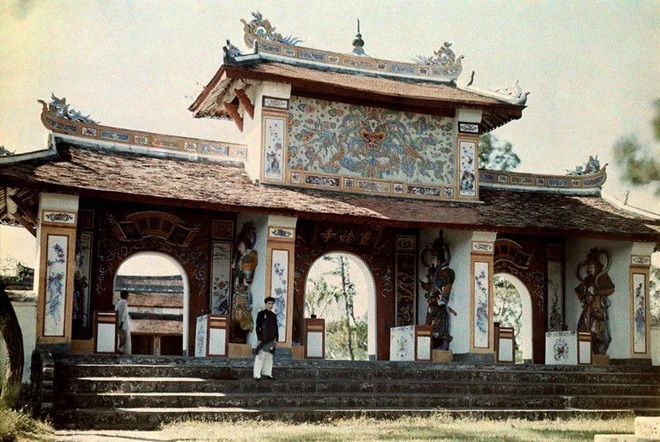
In addition, the roof of the three-way gate is covered with tiles and the corners are decorated with dragon motifs. Walls are built of bricks, each wall is covered with a guardian statue to protect the pagoda. Looking up to the 2nd floor of the gate is the place to worship Lord Nguyen Hoang and Thien Mu.
As the main gate leading to the temple, the three-way gate has walls made of ancient bricks, the floor is made of wood, has 3 aisles, each aisle has a wooden 2-leaf plank door bound with copper belts and nails, on both sides of the paths. Go have a guardian statue guarding.
For unknown reasons, after the feudal period ended in 1945, the painting on the 2nd floor of the three-way gate of Thien Mu Pagoda was covered with whitewash. Since then, tourists and people coming to the temple to worship have no longer had the opportunity to see this unique work of art.
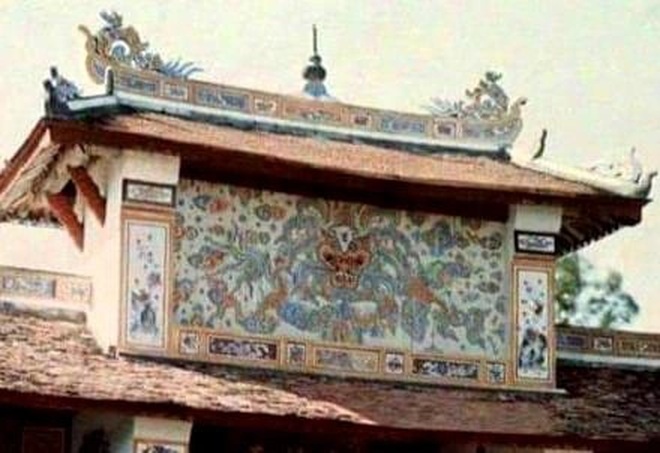
Through many renovations to the temple, in which, the renovation period lasting from 2003-2006 was a large-scale renovation at Thien Mu pagoda, the workers removed the layers of colored lime (5-7 layers). and found out below that there is a decorative drawing of the above painting.
In order to restore and preserve the paintings, and at the same time to meet the requirements of Buddhist monks and nuns, the consulting unit has studied the technical process, carefully peeled off the lime layers to reveal the paintings, and repaired the paintings according to the technique. Restoration technique, using chemical preservatives to prevent stickiness and color retention, then cover with paper and then use colored lime on it.
After the restoration, the painting was once again covered. On October 12, the website of PV Dan Tri at this location, the location of the second floor of the three-way gate with a dragon painting was closed by wooden slats. When asked about this painting, many monks in the temple also shook their heads.
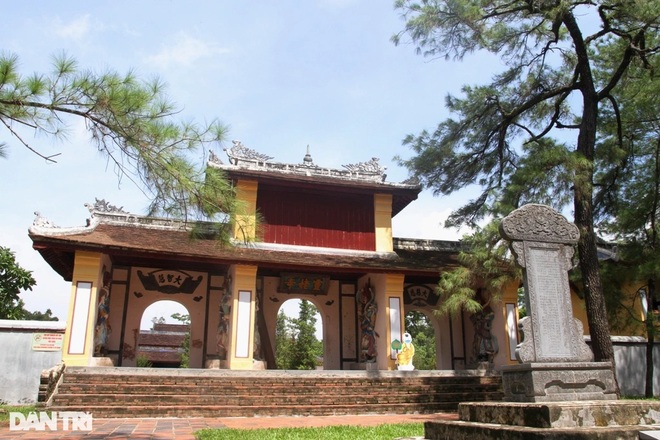
Talking with PV Dan Tri , Dr. Phan Thanh Hai, Director of the Department of Culture and Sports of Thua Thien Hue province, said that at the time of the restoration of Thien Mu Pagoda in 2003-2006, Mr. Hue city as an investor.
“Thien Mu Pagoda under the reign of King Nguyen based the capital in Hue was proclaimed as the national temple, is the temple of the royal court, so there are many fine art decorations associated with Hue royal court. The painting on the three-door gate appeared late in the king’s life. Khai Dinh, Bao Dai (1916-1945) were covered for a short time.
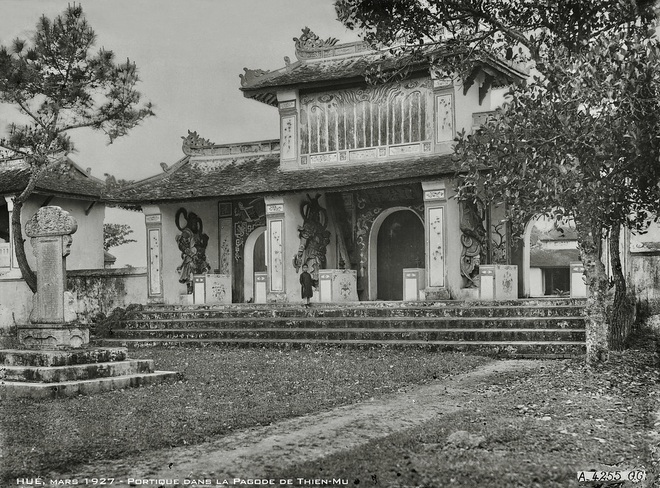
The reason is that after the Nguyen Dynasty associated the royal temple with Thien Mu pagoda, the teachers in the temple did not want the influence of Confucianism, but only focused on practicing, so they had to whitewash to cover that picture.” – Dr. good.
During the 2003-2006 restoration, the council consulted with the temple, and was also advised by the teachers that the painting should still be covered. Respecting the opinion of the temple, the dragon painting, after being revealed and restored, was once again covered.
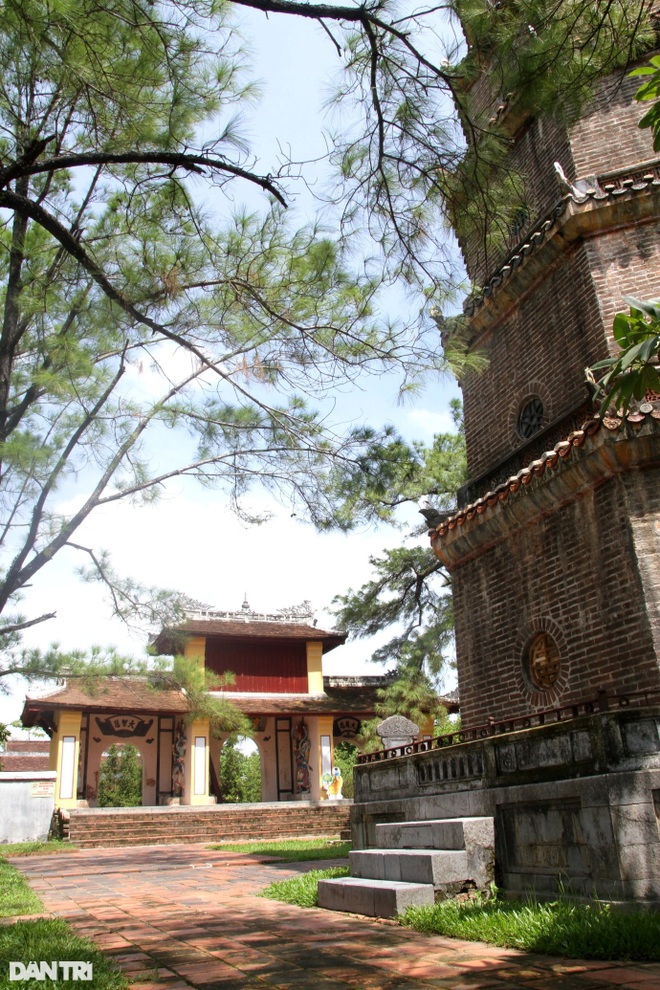
After being born in 1601, in 1665 Lord Nguyen Phuc Tan restored Thien Mu pagoda. In 1710, Lord Nguyen Phuc Chu cast Dai Hong Chung fruit (2.5m high, 1.4m in diameter, weighing 2,052kg). In 1715, God again built a stele bar 2.6m high and 1.25m wide placed on the back of a turtle made of marble 2.2m long and 1.6m wide.
The two main architectural works of the pagoda are Phuoc Duyen Tower and Dai Hung Palace. The octagonal Phuoc Duyen tower is 7 floors, 21m high, each floor worships a Tathagata, the highest floor worships the Buddha. Dai Hung Palace is the main temple in the temple, with magnificent architecture; In addition to the bronze Buddha statue in the palace, there are countless statues and a bronze statue cast in 1677.
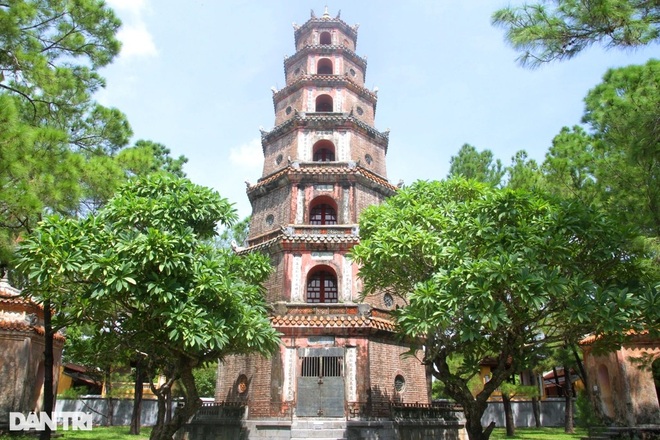
Under the reign of King Thieu Tri (1841-1847), Thien Mu Pagoda was one of the 20 spiritual landscapes of Hue. This king had a poem “Thien Mu Chung Thanh” carved on a stone stele near the gate of the temple. At the temple, there are many treasures such as a bronze medallion cast in 1677 with artistic value; wooden diaphragm donated by Lord Nguyen Phuc Chu himself in 1714; Stone stele engraved with poems of the kings of the Nguyen Dynasty. Especially, the Dai Hong Chung, which was cast in 1710, is considered a unique work of sculpture, painting and bronze casting industry under the Nguyen Lords. It was recognized as a National Treasure in 2013. It is still preserved here. keep and display the blue Austin car – a relic left by the late Venerable Thich Quang Duc before setting himself on fire to protest against the policy of repression against Buddhism by the Ngo Dinh Diem regime in 1963…
From the date of construction until now, the temple has been restored many times (1665, 1714, 1815, 1831, 1844, 1899, 1907, 1957). The latest time was in 2003-2006 chaired by Hue Monuments Conservation Center. Through the restoration, the temple still retains its majesty, splendor and magnificence.
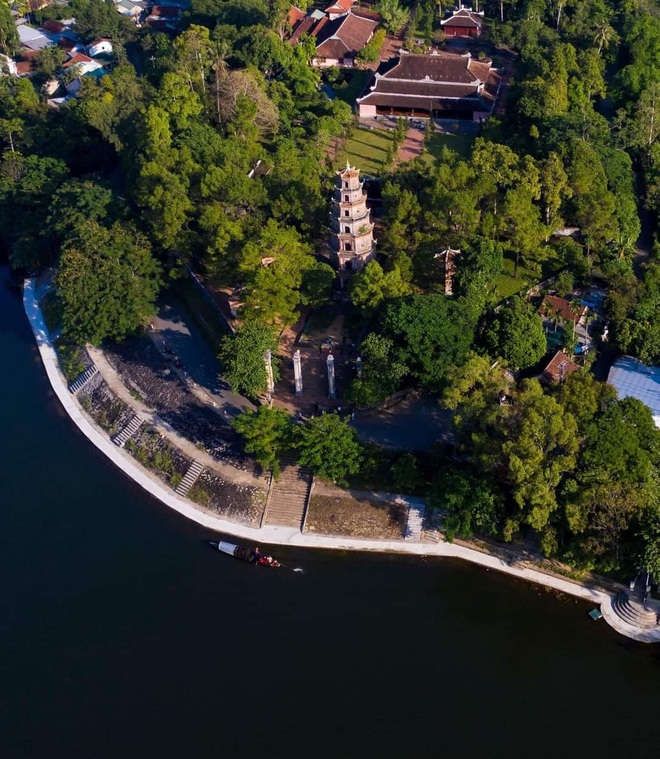
In 2003-2006, Hue Monuments Conservation Center restored 18 work items at Thien Mu Pagoda with a cost of more than 26 billion VND at that time, which is considered a comprehensive restoration after 400 years. The temple was born. Highlights in this major restoration are the main works such as Phuoc Duyen tower, Huong Nguyen communal house, Dai Hung palace, the three-way gate, the bell tower, etc., which have been restored. In particular, the Phuoc Duyen tower was seriously damaged and tilted by 7 degrees, which has been carefully researched by the specialized unit to handle the tilt, apply new technical solutions to increase the bearing capacity, and withstand storms and storms. tower.
Some pictures of the most famous pagoda in Hue – Thien Mu recorded by PV:
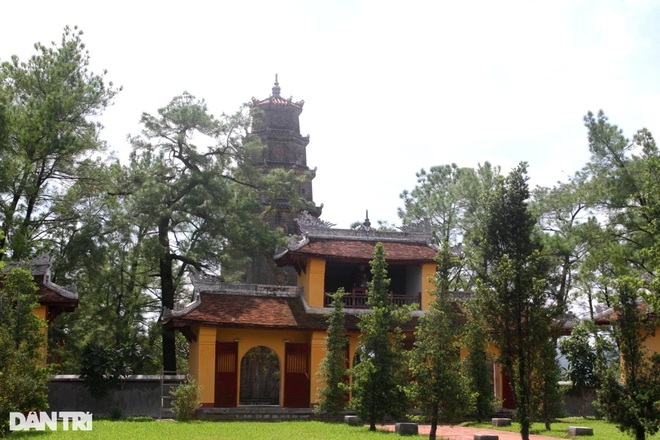
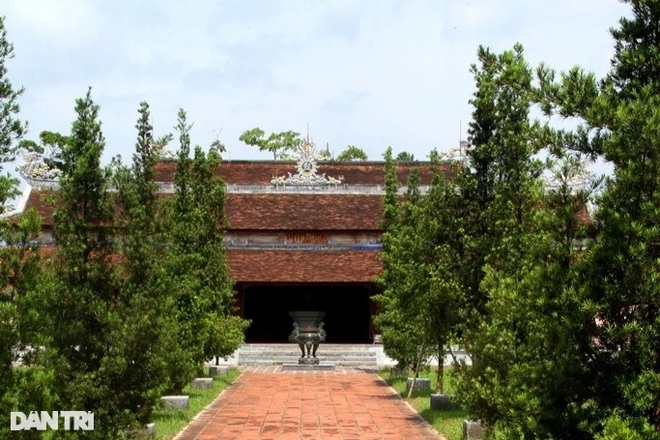
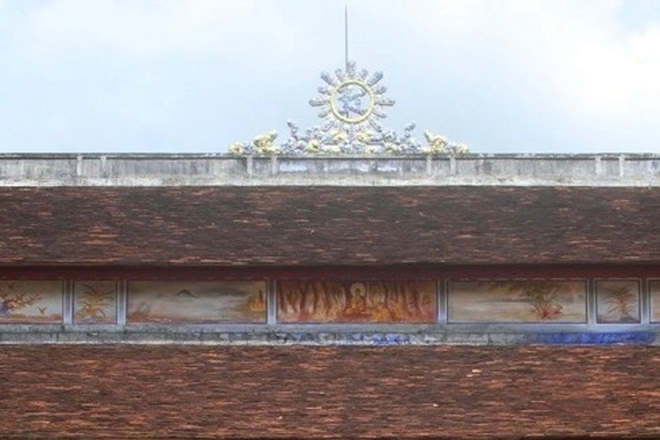
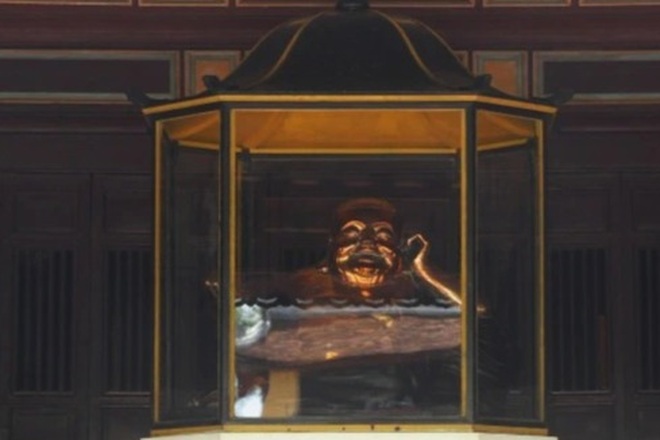

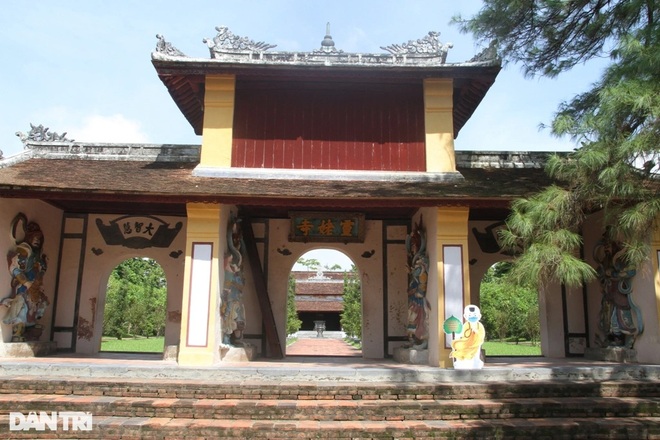
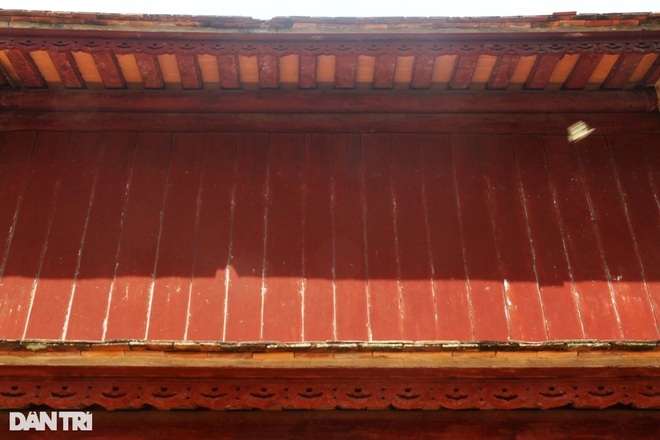
The “mystery” of the dragon painting is hidden at the gate of Thien Mu pagoda in the ancient capital of Hue
vinlove.
Source: vinlove









